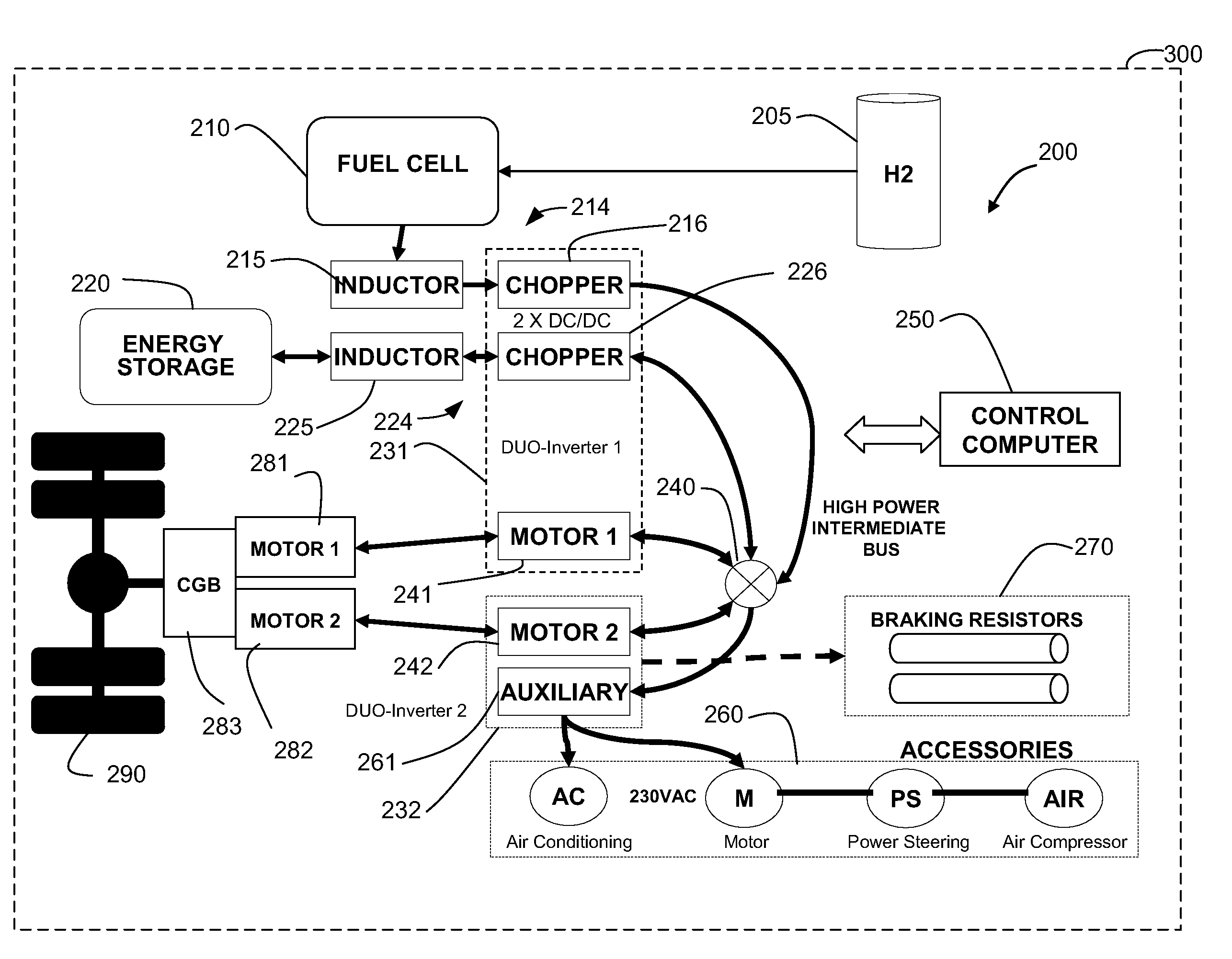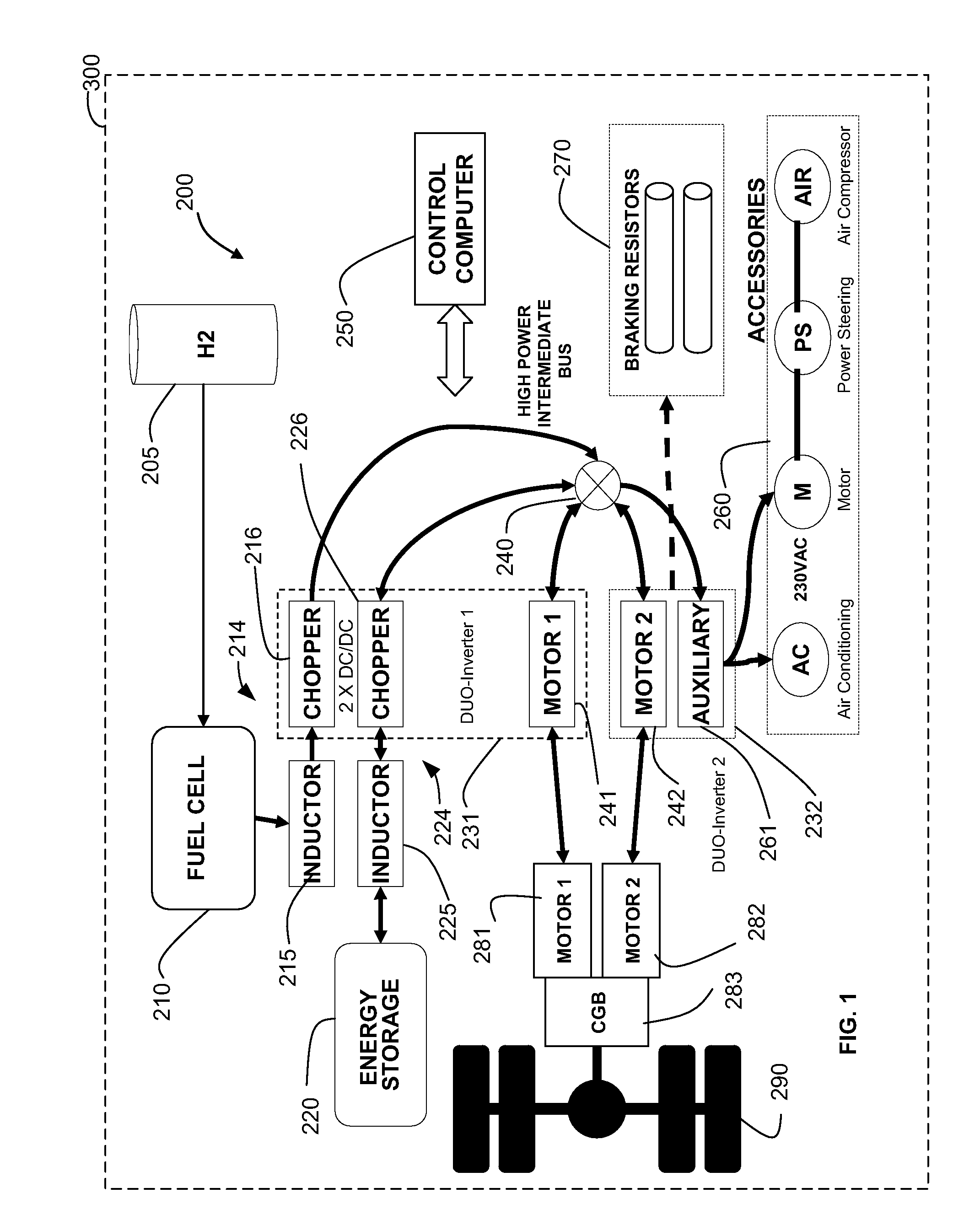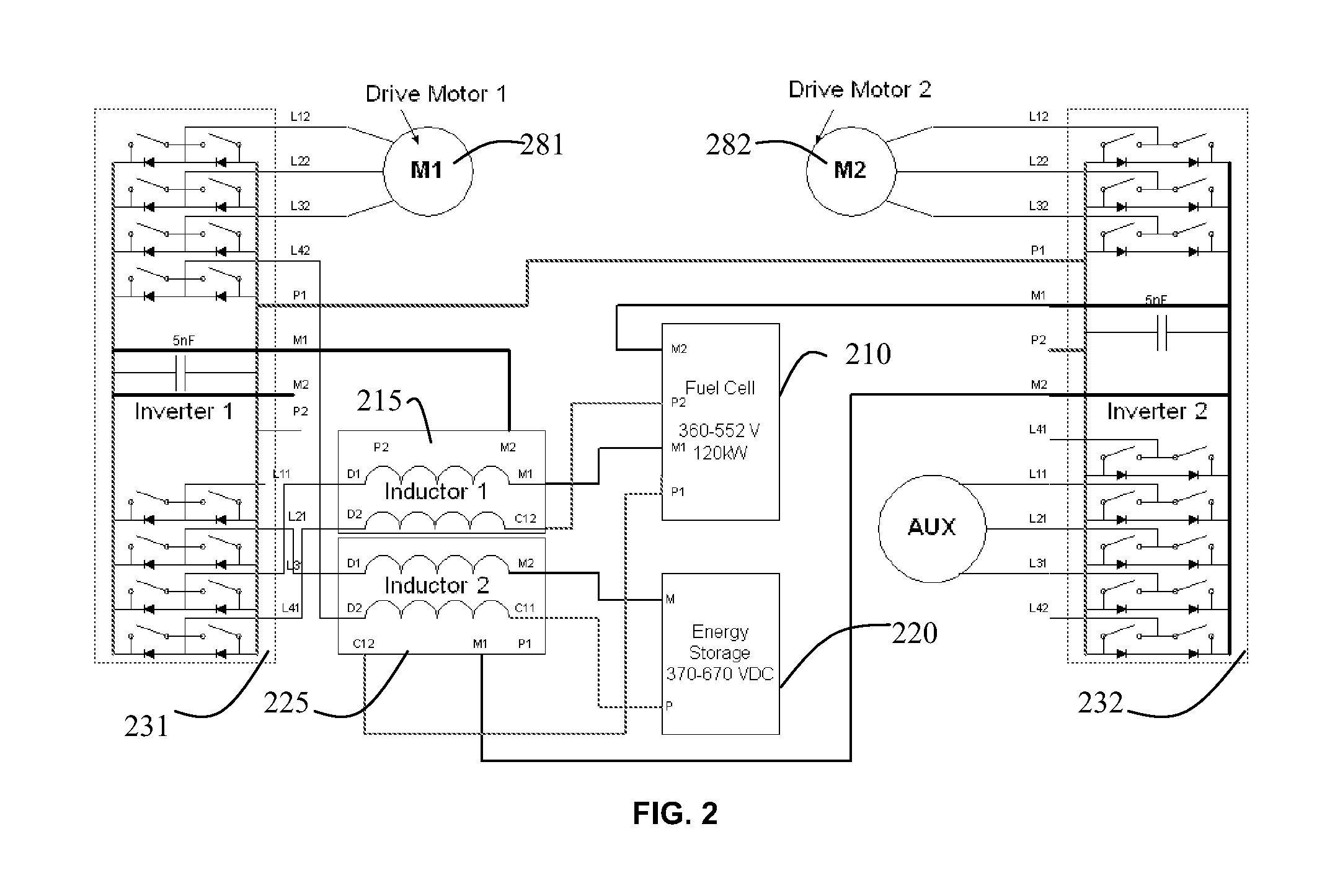Fuel Cell Hybrid-Electric Heavy-Duty Vehicle Drive System and Method
a fuel cell and hybrid technology, applied in the direction of electric energy management, electric devices, special data processing applications, etc., can solve the problems of low mechanical output power of vehicle electric propulsion motors, limited overall fuel cell vehicle efficiency, and inability to accept advanced batteries, etc., to achieve less “power” stress, increase fuel economy, and slow power change response of fuel cells
- Summary
- Abstract
- Description
- Claims
- Application Information
AI Technical Summary
Benefits of technology
Problems solved by technology
Method used
Image
Examples
Embodiment Construction
[0017]With reference to FIGS. 1-3, and initially FIG. 1, an embodiment of a heavy-duty vehicle hybrid-electric drive system (“system”) 200 for a heavy-duty vehicle 300 will be described. As used herein, a heavy-duty vehicle is a vehicle over 10,000 pounds GVWR (Gross Vehicle Weight Rating). The heavy-duty vehicle hybrid-electric drive system 200 includes a fuel cell used as the main power source and an energy storage battery as a secondary power source. Each power source has its energy flow through a separate DC / DC converter before combining the power output from both the fuel cell and battery on a high-voltage high power intermediate bus to supply a stable voltage to the electric drive motors. Having both the fuel cell and battery connected through their own separate DC / DC converter maintains a stable voltage at the input of the inverter / controller for the drive motors, relaxes the dynamic requirements placed on the fuel cell system, allows the fuel cell to operate at optimum effic...
PUM
 Login to View More
Login to View More Abstract
Description
Claims
Application Information
 Login to View More
Login to View More - R&D
- Intellectual Property
- Life Sciences
- Materials
- Tech Scout
- Unparalleled Data Quality
- Higher Quality Content
- 60% Fewer Hallucinations
Browse by: Latest US Patents, China's latest patents, Technical Efficacy Thesaurus, Application Domain, Technology Topic, Popular Technical Reports.
© 2025 PatSnap. All rights reserved.Legal|Privacy policy|Modern Slavery Act Transparency Statement|Sitemap|About US| Contact US: help@patsnap.com



